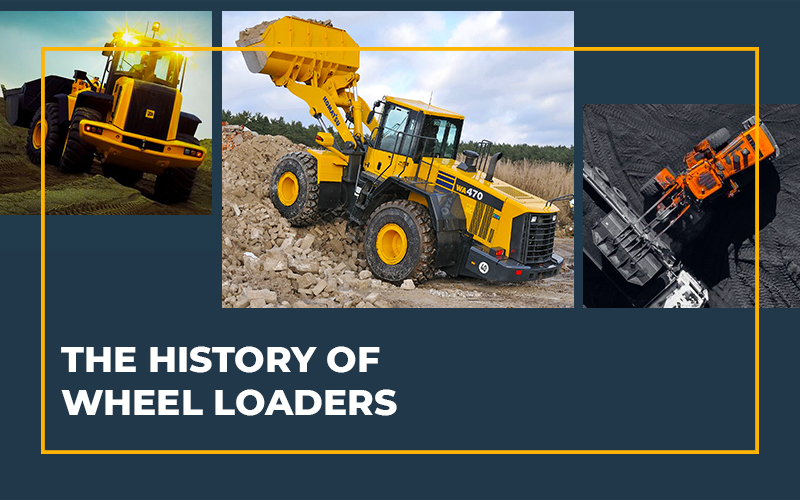Wheel loaders are among some of the most well-known heavy equipment that you can find at a worksite. The machine is one of the most versatile used in construction. The jobs it is used to complete include digging, carrying loads, handling materials used in construction, and standard site preparation.
Steam Powered Tractors
Although wheel loaders are now extremely important for the construction industry, they did not have the same momentum back when the first steam rollers were introduced. In fact, the first wheel loader prototype was not even developed until about a century after the introduction of steam rollers. It was not until the 1920s that the first prototype of a wheel loader was developed when the idea of mounting a loader bucket on an agricultural tractor made it possible.
Early Wheel Loaders
The wheel loaders that first came onto the scene were simple machines with a rigid frame. They were essentially just regular tractors with a bucket supported by a wire rope mounted on top. The bucket had a mechanism that made use of gravity to dump loads up to 0.5 cubic yards.
In the late 1930s, a Chicago engineer by the name of Frank G. Hough developed the first self-contained wheel loader, the Hough Model HS. This was a rubber-tired loader with a two-wheel drive, the first of its kind. After the introduction of the Hough model, wheel loaders started becoming integrated with a rigid frame, and big machine manufacturers like Caterpillar started to join in as well. This is what led to the CAT wheel loaders we see today.
Introduction of Tilt Control
After the introduction of the first prototype, it took almost thirty years for another significant innovative development for the wheel loader when the articulated frame for the machine was introduced in 1953. Before the introduction of the frame, the machine used to have trouble moving around in small, tight places, and the fact that the tilt bucket was fixed made it less effective. With the new articulated frame, the operator had the ability to control the bucket’s tilt. With this additional control, dumping and loading with the machine became much easier, making it possible to do all kinds of new work with the machine. Shortly after the addition of hydraulics to the articulated frame, something that looks a lot like the wheel loaders of today started to take shape.
The Pivot Arm
The last piece of the puzzle in the modern-day wheel loader would be moving the position of the pivot arm. Pivot arms were initially mounted close behind the operator’s seat. Due to their placement and the up and down movement, they were considered to be a safety risk as they impaired the operator’s visibility, particularly when the arms were raised.
The national safety council collaborated with heavy equipment manufacturers in the early sixties and had the pivot arm repositioned to the front. This way, the operator was able to see better, and it helped make the machine much safer. This concluded the development of the wheel loader’s basic design. After that, the focus shifted mainly toward making bigger equipment capable of carrying larger loads.


 1400 Broadfield Blvd, Houston, TX 77084,
USA.
1400 Broadfield Blvd, Houston, TX 77084,
USA.